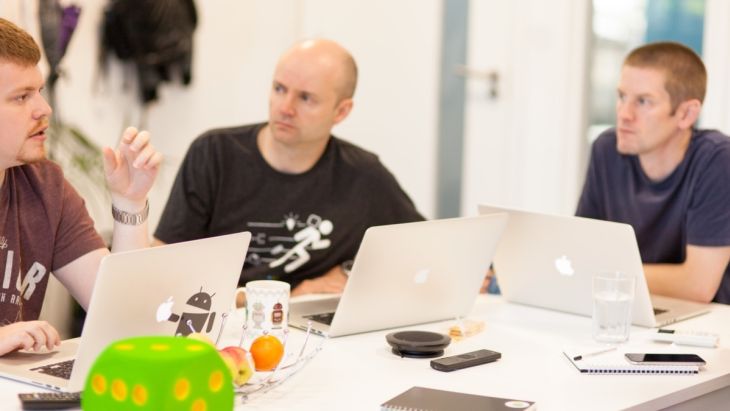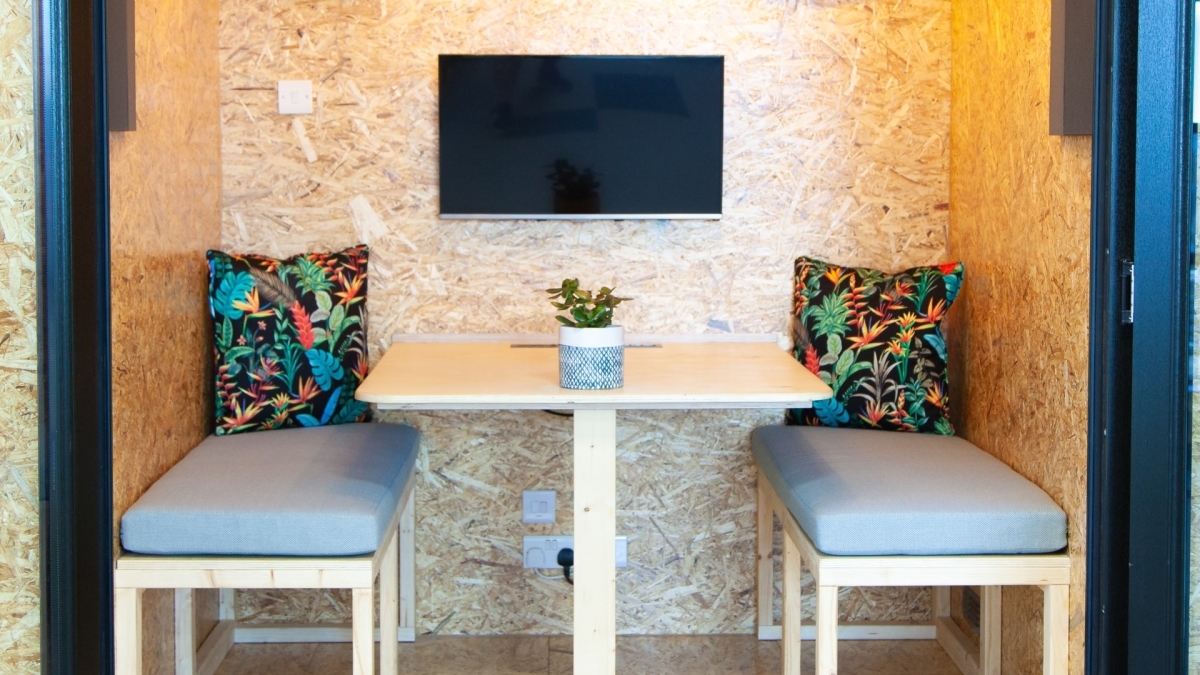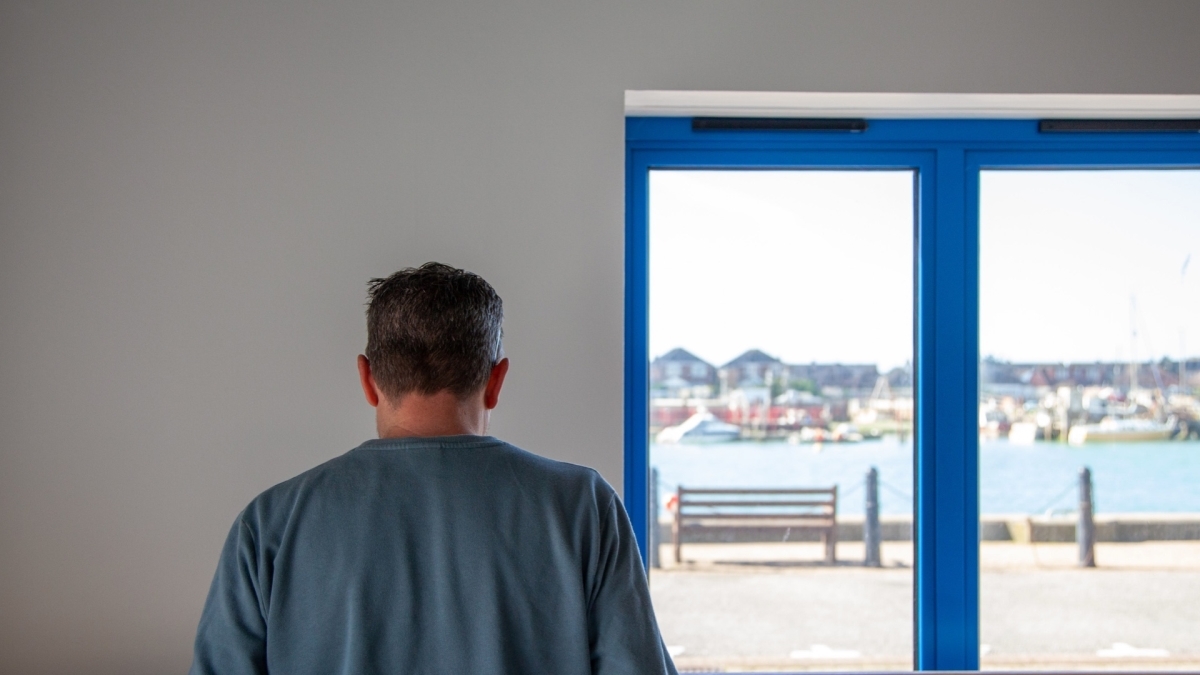Hybrid Meetings: How to Get the Most Out of Your Time

Unavoidable hybrid meetings require careful thought to be effective.
When I said I had a blog in progress, my team joked ‘Is it about meetings?’ Embarrassingly it was.
Either they know me too well and have heard me emphasise the importance of running hybrid meetings well many times before, or they understand that this is a vital topic for us in this period of transition. I guess I hope it is all of these.
Switching to a Hybrid Working Model
We recently made the switch back from working fully remotely, to a hybrid in-person/remote model. This has been hugely successful and whilst there are bumps to smooth over and team feedback to absorb and action, the overwhelming feeling is that it has been an important step to being more ‘Brightec’ again.
One of our goals in returning to more in-person days was to decrease the number of online meetings in favour of more time in person. This has been great but unsurprisingly hasn’t reduced the need for meetings.
Whilst our team can often meet in person, it is impossible to do that with our clients with the regularity that our collaborative approach requires. We’ve therefore had to think carefully about how we run hybrid meetings.
Hybrid Meeting Meaning: What is a Hybrid Meeting?
We would define hybrid meetings as when there are 2 or more people in-person and at least 1 person working remotely.
Hybrid Meeting Solutions: The Brightec Way
The first thing to say before anything else is that in order to make any meeting effective, you have to be intentional. It is all too easy to schedule a meeting (in-person, remote or hybrid) without thought to the context, the agenda, the timing or the location.
All of these are important if we want to ensure we’re not wasting valuable time. Being intentional in all of these critical areas as you consider arranging a meeting should help to make that meeting productive and useful.
Creating an effective meeting is no different to this; you have to be intentional about it. However, a hybrid meeting has an additional factor to consider. There are two audiences or sets of participants in these meetings: people who are working online and people who are in the room.
It is much easier to run online-only or in-person-only meetings than meetings with people in both situations. You don’t want either side of the coin to feel they are less engaged in the meeting or unable to contribute. They should be equally involved in the meeting whether they are online or in-person.
We’ve found this to be exceptionally difficult to achieve, but we have learnt a few things over the last few months that have improved things.
How to Have Effective Hybrid Meetings
Meetings are not ‘doing the work’, meetings should ‘enable the work’.
On the basis that a proposed meeting is required, useful and can’t be achieved through another method, let's look at how to have effective hybrid meetings.
Choose the Hybrid Meeting Location
I’m sure many of us have sat in huge corporate boardrooms, trying to have a meeting and at least one person joining in online. I’ve done it many times and it doesn’t encourage focused, constructive, collaborative communication. Equally, most of us don’t have equipped hybrid-specific meeting rooms available in large tech companies (eg. Google).
That being said, your company should look to have a range of meeting rooms of different sizes and they should be used appropriately.

The Brightec Studio: Catering for Hybrid Meetings
When we were designing the layout for our new studio we were mindful to create spaces of different sizes to meet the various requirements we expected for our meetings. For us this looked like:
A room for < 2 people
A room for < 4 people
A room for ~ 6 people
A space for ~ 25 people
We use all of these rooms throughout the working day to ensure we have the right sized space for our team to book and utilise appropriately.
Hybrid Meeting Equipment Must-haves
As important as choosing the right space to have your hybrid meeting is the equipment used to contribute and view the meeting.
Again, I’m sure we’ve all been in meetings or even hosted them when there are multiple people gathered around a single laptop. Could you really say this was an ‘effective meeting’? Were all parties able to contribute equally? I’d suggest it is unlikely.
We’ve found that there are predominantly three types of meeting setup options and they work better or worse depending on the size and scale of the meeting:
Hybrid Meeting Technology
The following are our tech recommendations to help facilitate more effective, communicative, and productive hybrid meetings.
Laptop Camera and Speakers/Headphones
This is the most basic and easy to set up (which is why we default to it). It only really works for an individual joining a call and should not be used for groups. Ideally, the individual should utilise headphones (rather than laptop audio) for a more immersive experience and better audio contribution.
Front-facing Camera
This is the classic conference room setup. It works when the room is orientated towards a single screen. This is really the only option for a larger in-person contingent, but can also work for small-medium groups.
Care should be taken to get a screen large enough that the online contingent can be seen and presentations can be viewed at a reasonable distance. It is also important to have an appropriate audio solution as this is where many systems fall down. Those working online should be able to clearly hear all the contributions from everyone in the room.
Centralised Camera
This is a more unusual setup, but one that we’ve found works really well for meetings of 2-4 people, especially when everyone also needs to contribute via their laptop (think Miro or Jamboard).
Other systems do exist, but our preference is the Owl. This single unit plugs into a laptop via USB and provides a centralised 360-degree camera as well as conference audio. It cleverly shows a panoramic view of the room and all the participants whilst also utilising motion and voice-activated focusing on the person speaking.
Owl could be used in combination with a wall-mounted screen, but we’ve found that it draws focus away from the main camera, decreasing the experience of those working remotely. Owl works best when individuals have their own laptops and gather around the Owl so they are all facing it.
Host Hybrid Meetings with Intentionality
Equipment and environment will only get you so far, you can have exactly what you need and still create a bad experience for those attending the hybrid meeting. These are some simple examples that we’ve experienced:
Lots of small talk ‘within the room’ between the people physically present. Multiple conversations in-person make it difficult for those online to contribute and often result in high levels of distraction and disengagement/
An online team, working on other things with their cameras off, disengaged and not present in the meeting.
Having a single, nominated, purposeful host can go some way to mitigating these issues and can certainly improve the quality and effectiveness of a meeting.
The host's responsibility is to set the agenda and ensure everyone in the meeting stays connected and focused. The host should look to keep an eye on the attendees, drawing input from as many people as possible.
Find out how to make online meetings more engaging.
How We Encourage Hybrid Meeting Intentionality at Brightec
It is really important to encourage the whole team to remain disciplined and intentional during hybrid meetings. We encourage our staff to keep their cameras on at all times, to try not to talk over each other and to keep conversations centralised. We make use of the chat features in the various video solutions, to make jokes, send links and raise questions without disrupting the flow of the meeting.
In Summary
We hope that by putting effort into how we do hybrid meetings, all parties can contribute and benefit equally and effectively.
We hope this article will inspire you to approach hybrid meetings with more intentionality so that you can enjoy productive meetings with purpose.
For more advice like this, find out how to set the context for productive meetings.

Looking for something else?
Search over 450 blog posts from our team
Want to hear more?
Subscribe to our monthly digest of blogs to stay in the loop and come with us on our journey to make things better!
